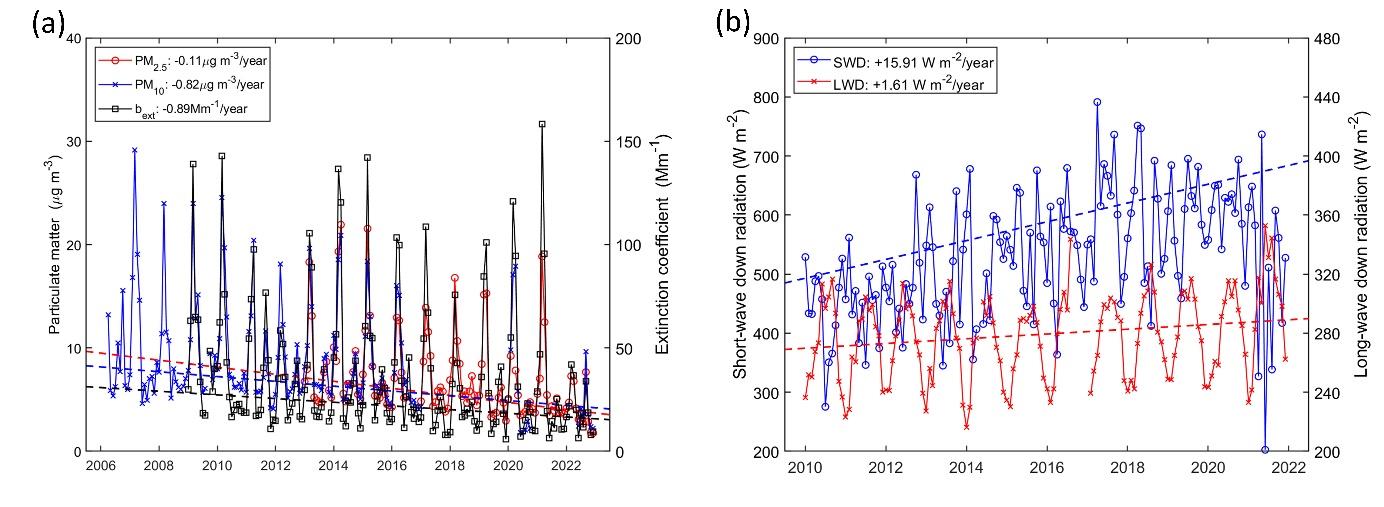A Long-term Study of Aerosol Concentrations and Solar Radiation at Mt. Lulin (2,862m) in East Asia
H. Huang1, S. Wang1, B. Andrews2,3, C. Ou-Yang1, Y. Chiu4, J. Yu4, C. Huang4, P. Shieh4 and N. Lin1,5
1National Central University, Department of Atmospheric Sciences, Taoyuan, Taiwan; 886-34227151, E-mail: zhai332@gmail.com
2Cooperative Institute for Research in Environmental Sciences (CIRES), University of Colorado, Boulder, CO 80309
3NOAA Global Monitoring Laboratory (GML), Boulder, CO 80305
4Environmental Protection Administration, Department of Environmental Monitoring and Information Management, Taipei City, Taiwan
5National Central University, Center for Environmental Monitoring and Technology, Taoyuan, Taiwan
The Lulin Atmospheric Background Station (LABS) located at Mt. Lulin (2862m) in central Taiwan was established to monitor the atmospheric compositions and radiation in the lower free troposphere of East Asia since 2006. The multi-year monitoring of LABS (17-years) will help to understand the climatology of the anthropogenic activity, aerosol optical properties, and radiation variation. To look into the details of this topic, we use aerosol and radiation measurement, including Thermo TEOM, aerosol in situ system (i.e. particle soot absorption photometer, continuous light absorption photometer, TSI Nephelometer, and TSI Condensation Particle Counter) operated by NOAA ESRL/GMD, Kipp & Zonen solar instruments (i.e. Pyranometer and Pyrgeometer), to analysis seasonal and interannual variation.
Figure 1 shows that trends in aerosol mass concentrations and extinction coefficient have decreased over 17 years at the LABS. Using the radiative-transfer calculation of cloud-free conditions, the surface short-wave downward (SWD) and long-wave downward (LWD) radiation showed a significant increasing trend. The increasing SWD and decreasing aerosol concentrations matched the direct aerosol effect theory, which illustrates the interannual variation of aerosol will further have climate implications.
Figure 1. Trends in (a) the aerosol concentrations of particulate matter (PM) and aerosol extinction coefficient (bext), (b) the surface short-wave downward (SWD) and long-wave downward (LWD) radiation during cloud-free conditions at LABS. The trend analyses were performed using Sen’s slope estimator.

